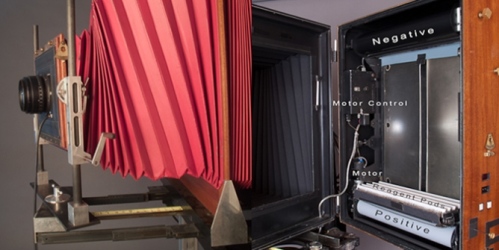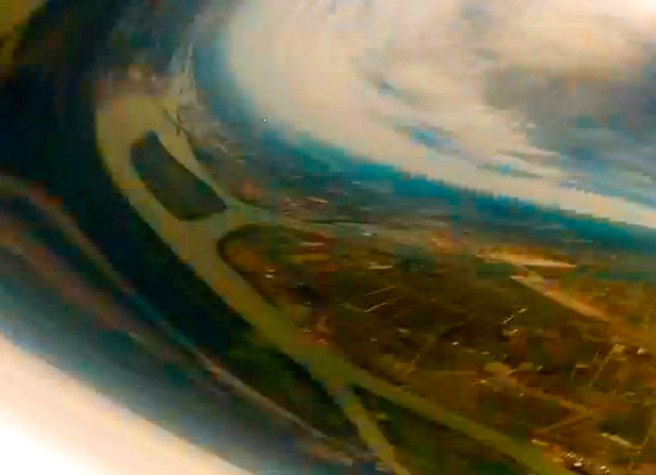
The Polaroid 20×24 camera, opened to reveal the film carriage.
Somehow, despite Polaroid’s recent near-death experience, the 20×24 inch camera format has survived. While traditional Polaroid films have disappeared, this most exotic product is prospering.
John Reuter is the long time operator and specialist in Polaroid procedures. He teamed up with some technical experts and Impossible Project founder Dr. Florian Kaps and raised $5 million to buy up two of the remaining six cameras and all available 20×24 materials. A dedicated studio now exists in Tribeca New York where a camera resides and can be hired for portraits, fashion shoots, and art production.
The process is involved and expensive. Studio hire is $1750 per day and each print runs to $200. The cameras are in demand though, the studio blog shows them travelling around the States on location and in studio shoots for portrait and fashion.

Artist Chuck Close posing for the 20×24 inch Polaroid camera
.












